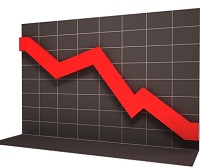 SPOKANE, WASH.—Ecova, a total energy and sustainability management company, recently released its second annual Big Data Look at Energy Trends: 2008-2012 report. The report draws from Ecova’s Big Data Warehouse, which contains more than 2.5 billion points of data from more than 700,000 facilities. This year’s analysis, specifically pulled from 150,000 facilities, including 2,200 lodging establishments, shows a decrease in total electric consumption intensity of 8.8 percent (5 percent decrease in lodging sector) and a 6 percent decrease in peak demand. The report also shows the lodging industry experienced a 30 percent increase in water and sewer prices from 2008 to 2012. Many retail organizations (including medium box retail, small box retail, and mercantile malls) have slashed more than 12 percent of consumption from their portfolios since 2008.
SPOKANE, WASH.—Ecova, a total energy and sustainability management company, recently released its second annual Big Data Look at Energy Trends: 2008-2012 report. The report draws from Ecova’s Big Data Warehouse, which contains more than 2.5 billion points of data from more than 700,000 facilities. This year’s analysis, specifically pulled from 150,000 facilities, including 2,200 lodging establishments, shows a decrease in total electric consumption intensity of 8.8 percent (5 percent decrease in lodging sector) and a 6 percent decrease in peak demand. The report also shows the lodging industry experienced a 30 percent increase in water and sewer prices from 2008 to 2012. Many retail organizations (including medium box retail, small box retail, and mercantile malls) have slashed more than 12 percent of consumption from their portfolios since 2008.
“Energy costs are top-of-mind for many executives, and while many companies are making significant strides in cost and consumption reduction, there is still a lot of work to be done,” said Jeff Heggedahl, CEO, Ecova. “Measuring against Ecova’s benchmarks will enable companies to evaluate how they are performing in comparison to peers. Data is critical to implementing a successful energy management strategy. It empowers intelligent decision-making, which helps organizations prioritize resources on high-impact projects.”
Current economic conditions and environmental climate shifts are driving the need for serious energy cost and consumption reduction programs. The U.S. Department of Energy has determined that commercial facilities account for 36 percent of all U.S. electricity consumption and cost more than $190 billion in energy every year. The U.S. Environmental Protection Agency recently found that 30 percent of the energy used in these buildings is wasted. Improving efficiency has the potential to create tens of billions of dollars in savings. This year, Ecova’s analysis concludes that consistent industry benchmarking coupled with other energy and sustainability initiatives produces measurable consumption reduction results for commercial and industrial facilities.
Report Highlights
• The study shows a decrease in total electric consumption of 8.8 percent.
• In conjunction with the reduction in electricity consumption, the study reveals a corresponding 6 percent reduction in peak demand. This shows that organizations are making significant investments in hardware and behavioral changes to reduce peak demand.
• The cost of electricity has decreased between 2008 and 2012; however, there are wide variances between regulated and deregulated markets. In deregulated markets the study uncovers a decrease in electric prices of 14 percent, however in regulated markets, electric prices have increased 4 percent.
• Natural gas prices have exhibited a much steeper drop of 36 percent since 2008.
• Energy usage has declined in all vertical markets except Healthcare (Inpatient).
• Water and sewer prices have climbed by almost 30 percent since 2008.
For the benchmark report, Ecova gathered insights from its Energy Data Warehouse that leverages information and daily detailed insight from more than 25,000 MW of electricity demand reaching back more than a decade. The Energy Data Warehouse incorporates consumption and cost data from just more than 8 percent of the total U.S. commercial and industrial electric load, making Ecova’s energy management portfolio among the largest in the United States.
Click here to download a copy of the Big Data Look at Energy Trends: 2008-2012 report.






